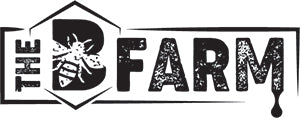Spring is an amazing time to be a beekeeper. After months of staring at your boxes, wondering just what was going on underneath, it’s finally time to pull back the curtain and begin inspecting bee hives. However, if you don’t take the proper precautions, your first spring visit to the hives could be a jarring experience for both you and the bees. To stay safe and smart, be sure to follow the best practices of beekeeping.
Pick the Right Day
Though you may want to check on your bees at the first sign of good weather, inspecting your honey bee hive in the spring requires patience. You will be better off if you wait until your area has reached a consistent, comfortable temperature. Wait for the climate to remain between 50 and 60 degrees for about a week before you take a look under the hood.
Make Sure You Have All Your Gear
When you open your box, you may encounter bees perplexed and frightened by your interruption. Even if you are just taking a quick peek, make sure all your safety gear is on, lest you be the victim of a brood of very cranky bees.
Open the Hive and Look Through the Combs
Smoke the bees lightly as you open the lid. Now begins the fun part—the I-Spy of inspecting bee hives. Let your eyes graze over each comb in a Z pattern, and see if you can spot the queen or any of her eggs. Queens tend to live on the edges of the frame to keep out of the light.
Check for Honey
Starvation is a common issue for bees in the spring. A hive can go through a large amount of honey as they raise a new brood. As you go about inspecting bee hives, make sure the hive has a healthy amount of sustenance. If you do not see at least three deep or four medium frames of honey, add some 1:1 sugar syrup and pollen substitute to keep them going. If the hive looks weak, The B Farm in Billerica, MA, has bee nucs for sale to help repopulate your box.
Clean the Brood Box and Rearrange the Chambers
Now it’s time to rearrange the chambers so that you can ensure your hive is making the most of its space. It’s also an excellent opportunity to clean the chambers and look for areas needing replacements.
First, remove the feeders and clean burr combs from the tops of the frames. Be aware of any foul smells or other signs of disease. Once you have cleaned the burr combs, place the brood boxes back in a different order. During the winter, bees cluster at the bottom of a hive and then go upward. By shuffling the brood boxes, you encourage the queen to use areas that had seen less activity or been abandoned.
